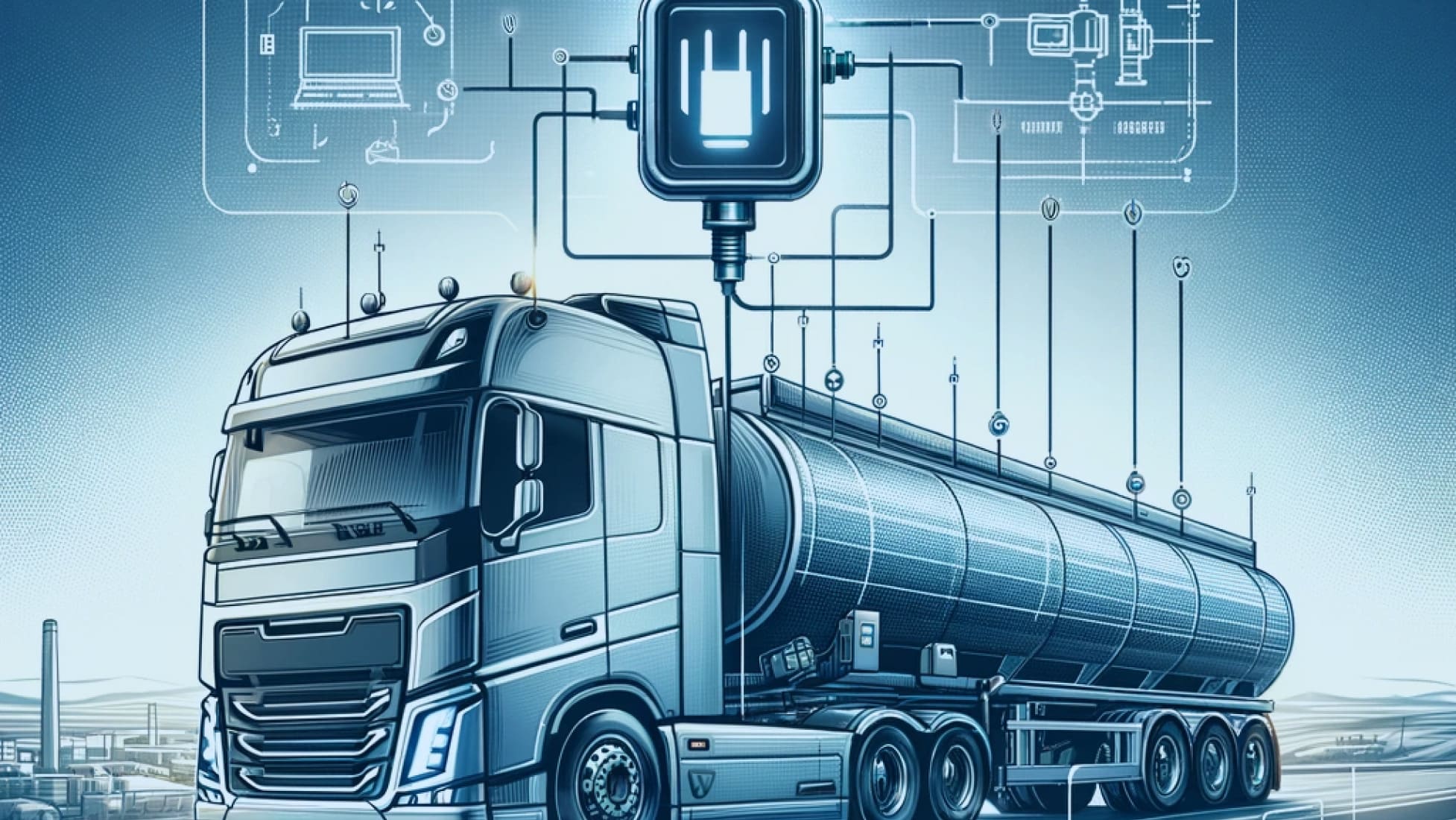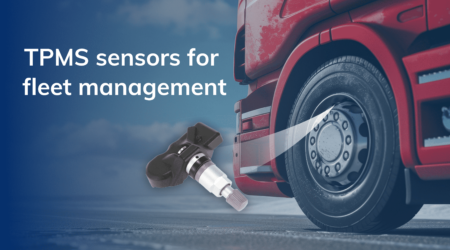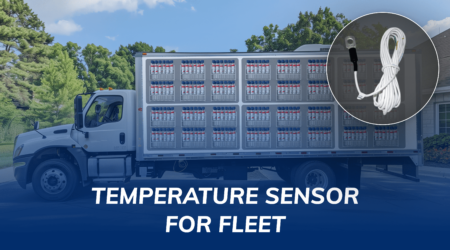The Impact of Fuel Tank Level Sensors on Fleet Management

The relevance of fuel sensors extends beyond cost management. In an age where sustainability, optimizing fuel consumption contributes to a reduced carbon footprint. This not only aligns with global environmental goals but also enhances a company’s green credentials—a factor increasingly valued by consumers and stakeholders alike.
Understanding Fuel Tank Level Sensor
Fuel sensors stand at the intersection of technology and vehicle management, serving as critical components in the quest for optimized fleet operations. These devices, embedded within the fuel system of trucks, offer a window into the real-time dynamics of fuel usage, providing data that is pivotal for efficient fleet management. This section delves into the mechanics of fuel tank level sensor, the various types available, and the overarching benefits they bring to fleet management systems.
Types of Fuel Tank Level Sensor
- Capacitive Fuel Sensors: These are among the most commonly used sensors in fleet management. They measure the change in capacitance that occurs as the fuel level changes in the tank. Capacitive sensors are prized for their accuracy and reliability, making them a staple in fuel monitoring systems.
- Ultrasonic Fuel Sensors: Utilizing sound waves to measure fuel levels, ultrasonic sensors are contactless and thus, not prone to wear and tear from fuel corrosion. They are versatile and can be used in various types of fuel tanks without needing physical contact with the fuel.
- Resistive Fuel Sensors: These sensors measure the resistance change as a float moves with the fuel level. While they are simpler and often more cost-effective, they can be less accurate than their capacitive or ultrasonic counterparts.
Benefits of Integrating Fuel Sensors
The integration of fuel sensors into fleet management systems unlocks certain benefits:
- Enhanced Fuel Efficiency: By monitoring fuel levels and consumption patterns, fleet managers can identify inefficiencies and implement strategies to optimize fuel use.
- Theft Detection: Real-time monitoring allows for the immediate detection of unusual fuel level drops, alerting managers to potential theft incidents.
- Accurate Fuel Data: Fuel tank level sensor provides precise data, enabling better budgeting and forecasting for fuel expenses.
- Maintenance Insights: Analyzing fuel consumption can also offer clues about the vehicle’s health, assisting in predictive maintenance efforts.
The functionality and variety of fuel sensors equip fleet managers with the tools necessary to navigate the challenges of fuel management. By leveraging these technologies, fleets can achieve greater operational efficiency, reduce costs, and enhance their sustainability efforts. The data harvested by these sensors is invaluable, offering a granular view of fuel dynamics that was previously unattainable.
As fuel tank level sensor become more integrated into fleet management systems, their impact on operational efficiency and cost savings continues to grow. The transition from traditional manual tracking methods to automated, sensor-based monitoring represents a significant advancement in the industry. This evolution not only streamlines operations but also propels fleets towards a more sustainable and profitable future.
The Impact of Fuel Sensors on Fleet Operations
The integration of fuel sensors into fleet management systems ushers in a new era of efficiency and control. These devices, through their advanced monitoring capabilities, have a profound impact on various aspects of fleet operations. This section explores the multifaceted benefits of fuel tank level sensor, highlighting their role in reducing fuel theft, optimizing fuel consumption, enhancing maintenance and safety protocols, and supporting environmental sustainability.
Fuel Theft Reduction
A significant concern for fleet operators is fuel theft. It can be internal (by employees) or external (by third parties). Fuel tank level sensor play a crucial role in combating this issue. They provide precise, real-time data on fuel levels, making any unauthorized withdrawal immediately noticeable. Fleet managers receive alerts for sudden drops in fuel levels that do not align with logged driving activities, enabling swift investigation and action. This not only deters theft but also instills a culture of accountability among drivers.
Fuel Consumption Optimization
Optimizing fuel consumption is paramount for fleet efficiency and cost management. Fuel tank level sensor offer detailed insights into fuel usage patterns, identifying areas where improvements can be made. For instance, data collected can reveal inefficient routes, excessive idling, or aggressive driving behaviors that lead to higher fuel consumption. Armed with this information, fleet managers can implement targeted strategies such as driver training programs, route optimization, and vehicle maintenance schedules. These interventions collectively contribute to a significant reduction in fuel expenses and enhance the overall operational efficiency of the fleet.
Maintenance and Safety Improvements
Fuel consumption data can serve as an indicator of vehicle health. A sudden increase in fuel usage may signal a maintenance issue, such as tire underinflation or engine problems, that requires attention. By enabling predictive maintenance, fuel sensors help prevent costly breakdowns and extend the lifespan of fleet vehicles.
Moreover, analyzing fuel usage patterns can improve driver safety. For example, excessive acceleration and hard braking, which negatively impact fuel efficiency, can also increase the risk of accidents. Fleet managers can use sensor data to identify and correct risky driving behaviors, promoting a safer driving environment.
Environmental Benefits
Environmental sustainability is an increasingly critical consideration for businesses. Fuel sensors contribute to this effort by ensuring that fuel consumption is as efficient as possible, thereby reducing the fleet’s carbon footprint. Lower fuel consumption means fewer emissions, aligning with global initiatives to combat climate change. This not only benefits the environment but also enhances the company’s reputation as a responsible and sustainable operation.
Challenges and Limitations
While fuel tank level sensor offer significant advantages to fleet management, their integration and operation come with a set of challenges and limitations. Understanding these hurdles is crucial for fleet managers to effectively implement and maximize the benefits of fuel sensor technology. This section outlines the primary challenges associated with fuel sensors and suggests possible solutions to mitigate these issues.
Technical Challenges in Integration
Integrating fuel sensors into existing fleet management systems can be technically challenging, especially for older vehicles or systems. Compatibility issues may arise, requiring additional modifications or upgrades. Additionally, the installation process itself can be complex, necessitating skilled technicians to ensure sensors are correctly positioned and calibrated for accurate readings.
Solution: To overcome these challenges, fleet managers can seek support from experienced vendors who offer comprehensive integration services. These vendors can provide guidance on choosing the right sensors for specific fleet needs and ensure seamless integration with existing systems.
Data Accuracy and Reliability
The accuracy of data provided by fuel sensors is critical for informed decision-making. However, factors such as sensor calibration, the quality of the sensor, and environmental conditions can affect data accuracy. Inaccurate data can lead to misguided decisions, potentially negating the benefits of fuel monitoring.
Solution: Regular maintenance and calibration of sensors are essential to ensure data accuracy. Choosing high-quality sensors from reputable manufacturers can also minimize reliability issues. Additionally, implementing a system that cross-verifies data with other sources, such as fuel receipts or GPS tracking, can enhance data integrity.
Cost Implications
The initial investment in fuel tank level sensor technology, including the purchase of sensors and integration into fleet management systems, can be significant. This cost barrier may deter smaller fleets from adopting this technology.
Solution: Fleet managers should conduct a cost-benefit analysis to understand the potential savings and ROI fuel sensors can offer. In many cases, the reduction in fuel costs, maintenance expenses, and theft incidents can offset the initial investment over time. Financing options or leasing sensors may also be available to mitigate upfront costs.
Resistance to Change
Implementing new technologies often meets resistance from staff, particularly drivers who may view fuel monitoring as intrusive. This resistance can hinder the effective adoption of fuel sensors.
Solution: Transparent communication about the benefits of fuel sensors, not only for the company but also for drivers (e.g., through incentives for efficient fuel use), can help overcome resistance. Training and involving drivers in the implementation process can also foster a more positive attitude towards the change.
Overcoming Challenges
Despite these challenges, the benefits of integrating fuel sensors into fleet management systems far outweigh the drawbacks. By addressing technical issues, ensuring data accuracy, managing costs effectively, and encouraging staff buy-in, fleet managers can leverage fuel sensors to significantly enhance fleet efficiency, reduce costs, and promote sustainability.
The advancement of technology and the evolving landscape of fleet management continue to open new avenues for overcoming these challenges, making fuel sensors an increasingly accessible and valuable tool for fleets of all sizes.
The Future of Fuel Tank Level Sensors in Fleet Management
As we navigate the evolving landscape of fleet management, the role of fuel sensors continues to expand, driven by technological advancements and a growing emphasis on efficiency and sustainability. The future of fuel sensors promises even greater integration with emerging technologies, offering enhanced capabilities and insights. This section explores the trends and innovations that are shaping the future of fuel sensors in fleet management.
Integration with IoT and Big Data
The Internet of Things (IoT) and big data are set to revolutionize fuel tank level sensor technology. By connecting fuel sensors to a network of devices, fleet managers can access a wealth of real-time data, enabling more nuanced analysis and decision-making. This integration facilitates the collection and analysis of vast amounts of data, from fuel consumption patterns to vehicle performance metrics, providing a comprehensive view of fleet operations.
Advanced Analytics and Machine Learning
Machine learning algorithms can process the data collected by fuel tank level sensor, identifying patterns and anomalies that might indicate issues such as fuel theft or inefficient fuel use. These algorithms can also predict future fuel needs based on historical data, helping fleet managers optimize their fuel purchasing and storage strategies.
Enhanced Sensor Accuracy and Reliability
Technological advancements are expected to improve the accuracy and reliability of fuel sensors further. Innovations in sensor design and materials, along with better calibration techniques, will ensure that the data provided is both precise and dependable.
Sustainability and Regulatory Compliance
As environmental regulations become stricter and the push for sustainability grows stronger, fuel sensors will play a critical role in helping fleets comply with emissions standards and reduce their environmental impact. By ensuring efficient fuel use and reducing unnecessary consumption, fuel sensors contribute to lower emissions and a smaller carbon footprint.
Conclusion
Fuel sensors are rapidly becoming an indispensable tool in fleet management, offering a pathway to unprecedented levels of efficiency, cost savings, and environmental sustainability. As we look to the future, the integration of fuel sensors with emerging technologies like IoT, big data, and machine learning heralds a new era of innovation and optimization in fleet operations.
The journey toward more advanced fuel management is ongoing, and as technology evolves, so too will the capabilities and benefits of fuel sensors. For fleet managers, staying abreast of these developments and embracing the potential of fuel tank level sensor technology is key to achieving a competitive edge and ensuring long-term success.
The impact of fuel tank level sensor on fleet management is profound, offering a clear illustration of how technological innovation can drive operational excellence. As we move forward, the role of fuel sensors in shaping the future of fleet management will undoubtedly continue to grow, marking a promising horizon for the industry.



